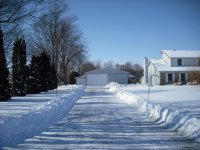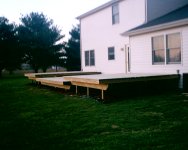Diamondpilot
Super Star Member
- Joined
- Jan 18, 2007
- Messages
- 16,316
- Location
- Daleville, IN
- Tractor
- Jinma 254/284 Ford 861 Powermaster at work
Be glad to talk about the cost of a Geo system DP. At $1.76 a gallon for propane thats = 2640 a heating season for 1500 gallons. Just to heat the house not water also. Which would be minimal. There is no grantee that propane will stay at $1.76. My Geo system cost me 21K, with rebates and tax credits, my system ended up costing me 13K. Not to mention the hot water as a free by product. It was a no brainer for me. Do you think people just go out and spend 20+ grand for a heating system and not figure the payback? Your not the only person on here that files fight plans.
My home is 2,400 SQ FT. I have strait propane on the hot water heater and furnace. Both 90+. I use 2 tanks, about 800 gallons of propane a year. I am locked in at $1.69 plus 7% tax per year. So $1.80 to my door. My home has Andersen Windows and good doors and plenty of insulation, over 30" in the attic. It was built in 1997. I was figuring a $20,000 installed charge when I looked into it a few years ago and it just did not make dollar and cents for me.
By the way the heat is keep at 70 deg from 6am to 11pm then drops to 66 deg at night so we are not freezing by any means. I do build a fire in the fireplace about 2 nights a week and usually have one going all day on Sundays but its just a normal fireplace, no wood burners or anything like that.
Chris
Attachments
Last edited:





